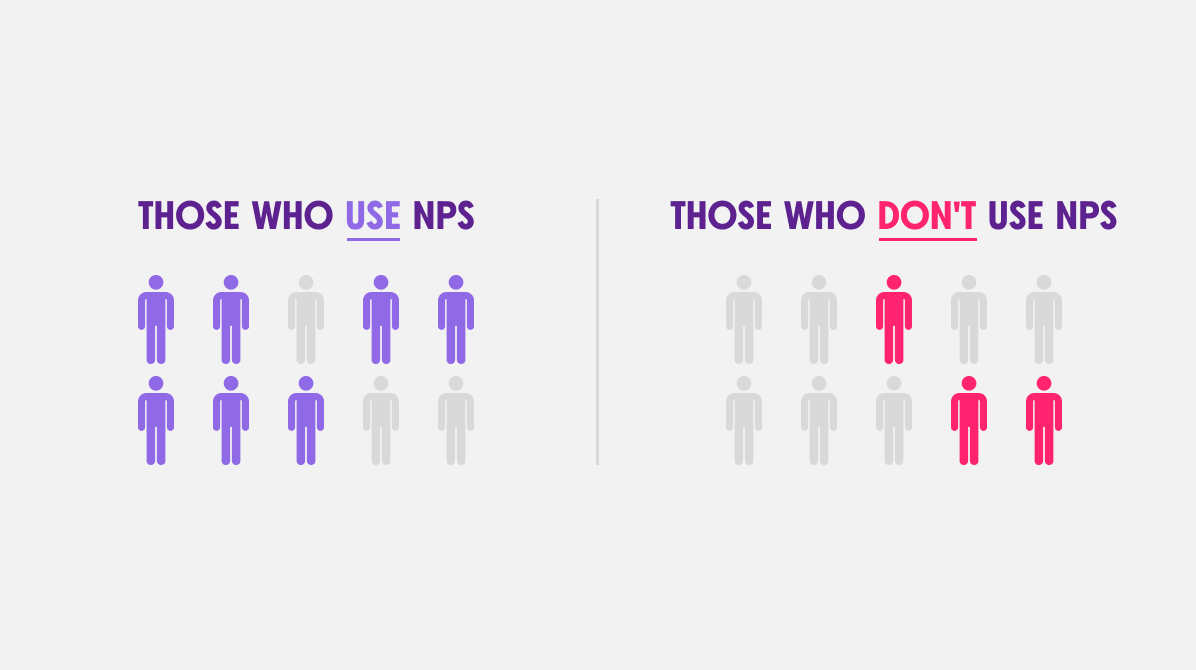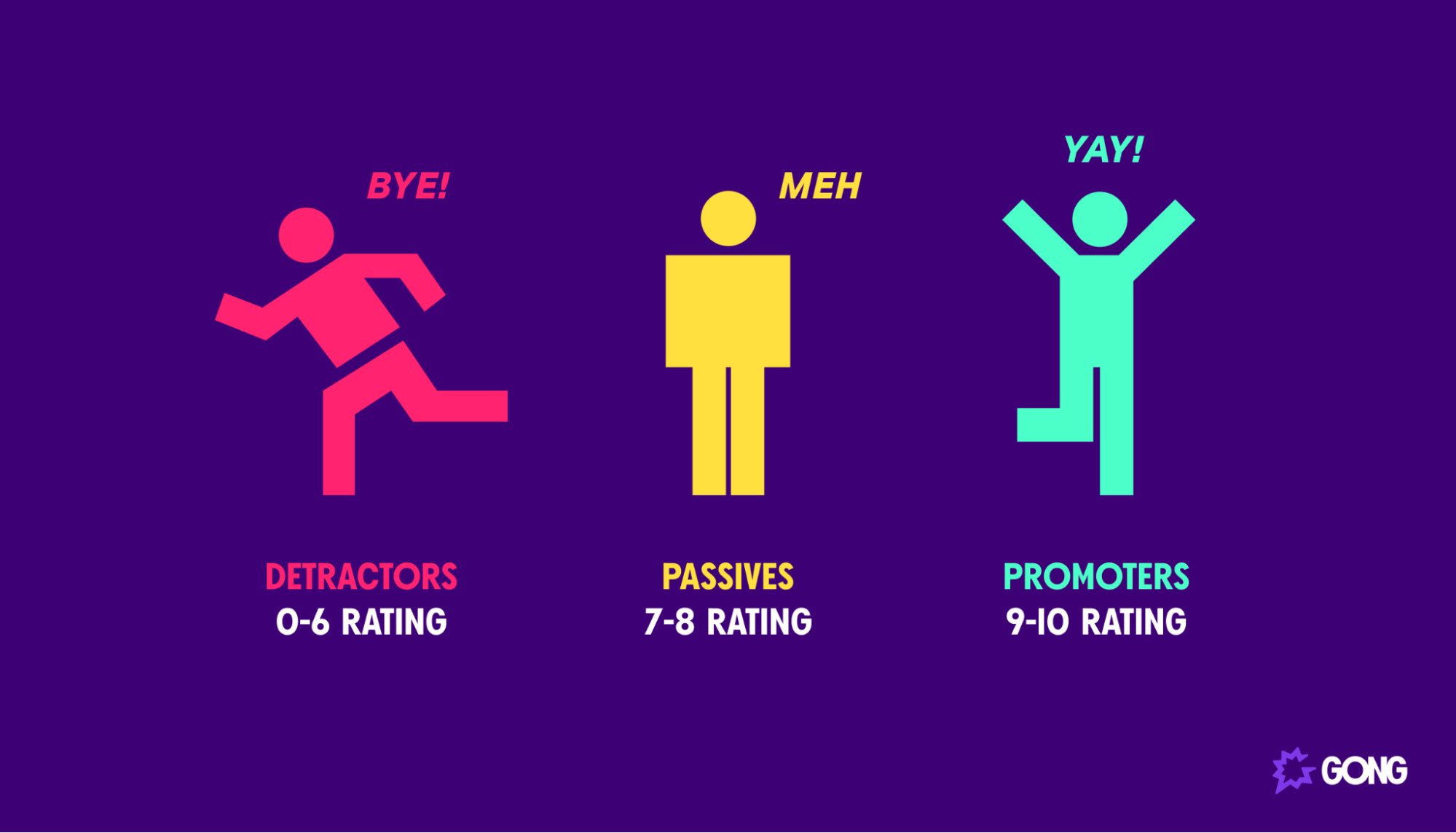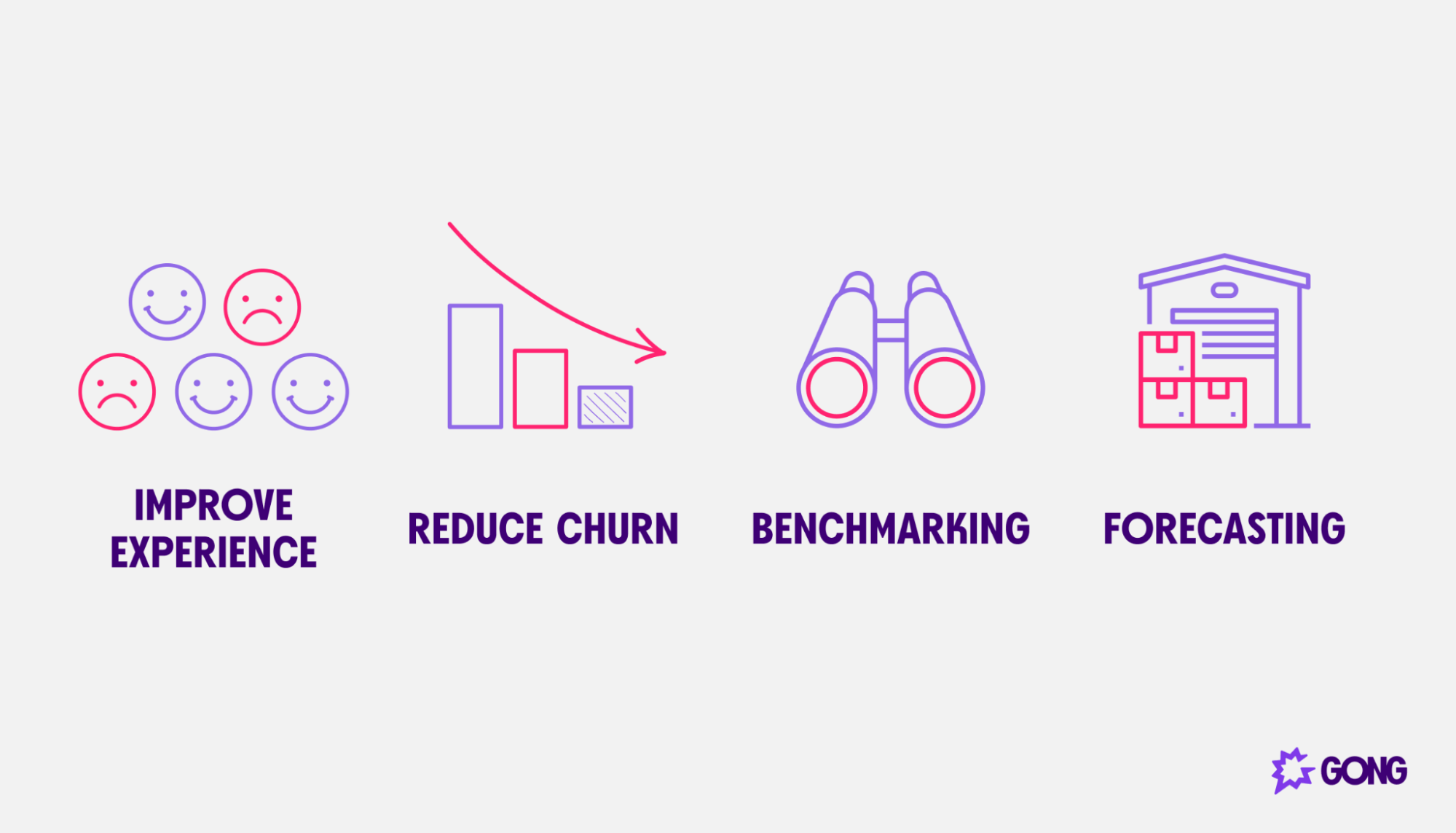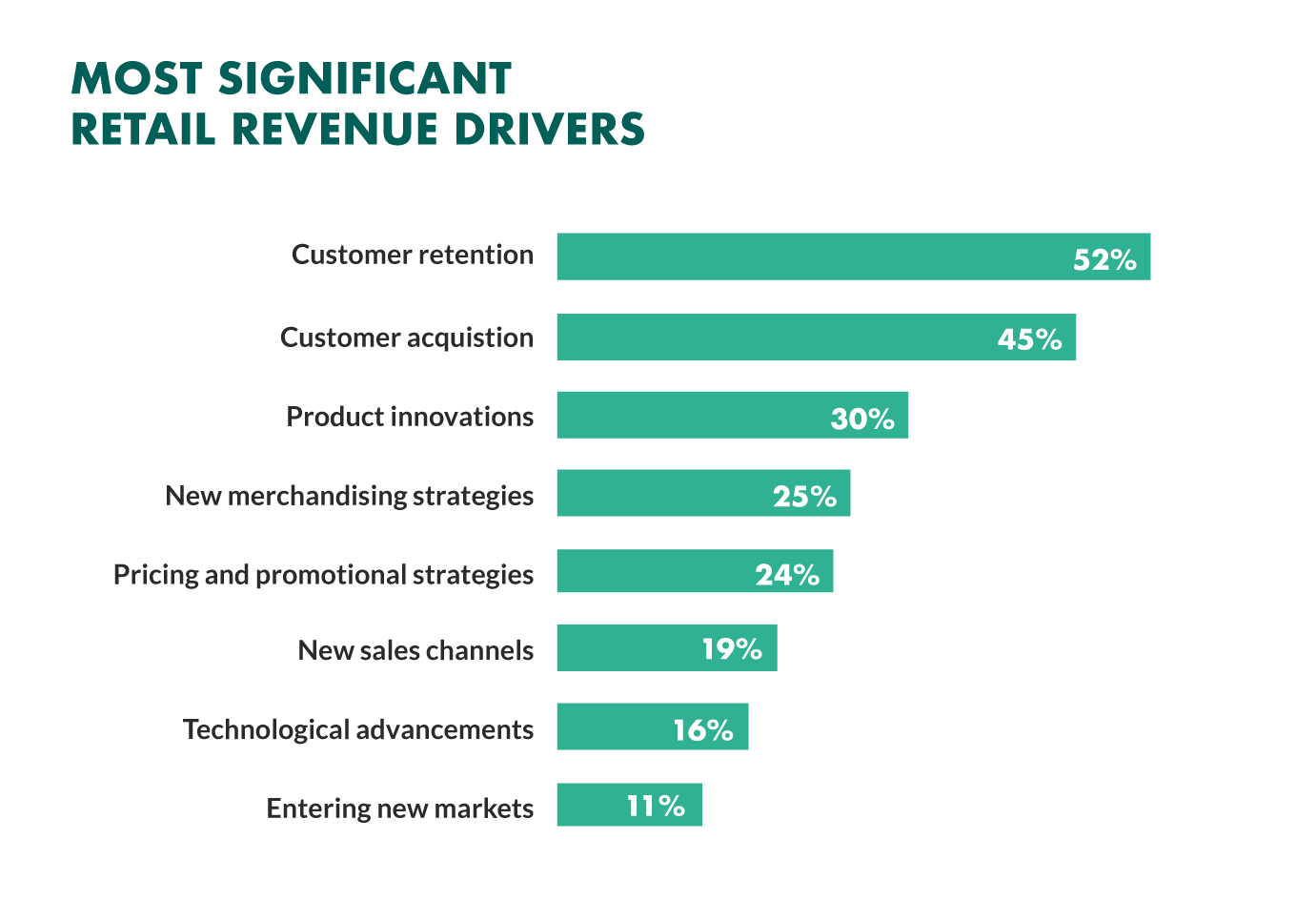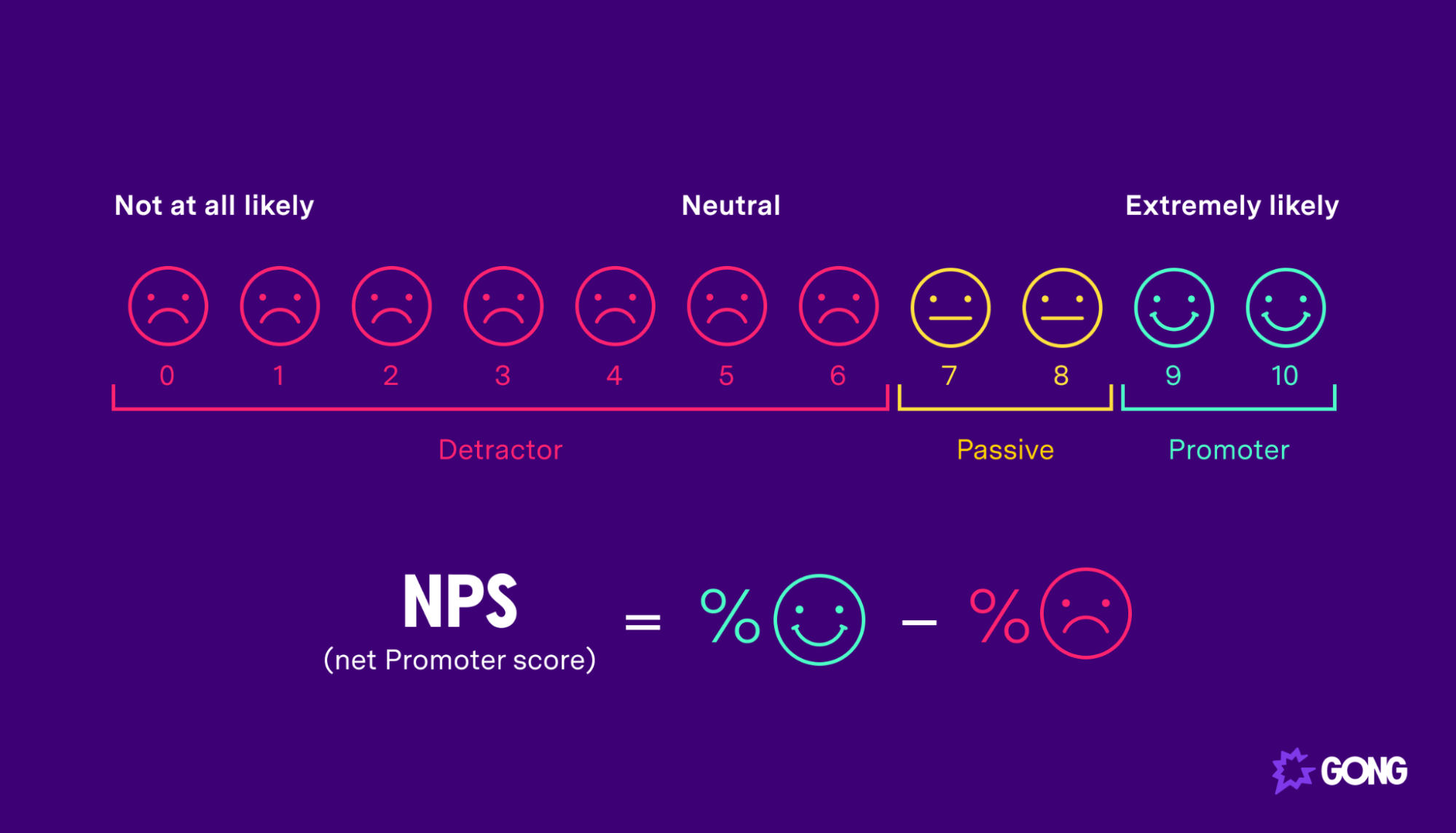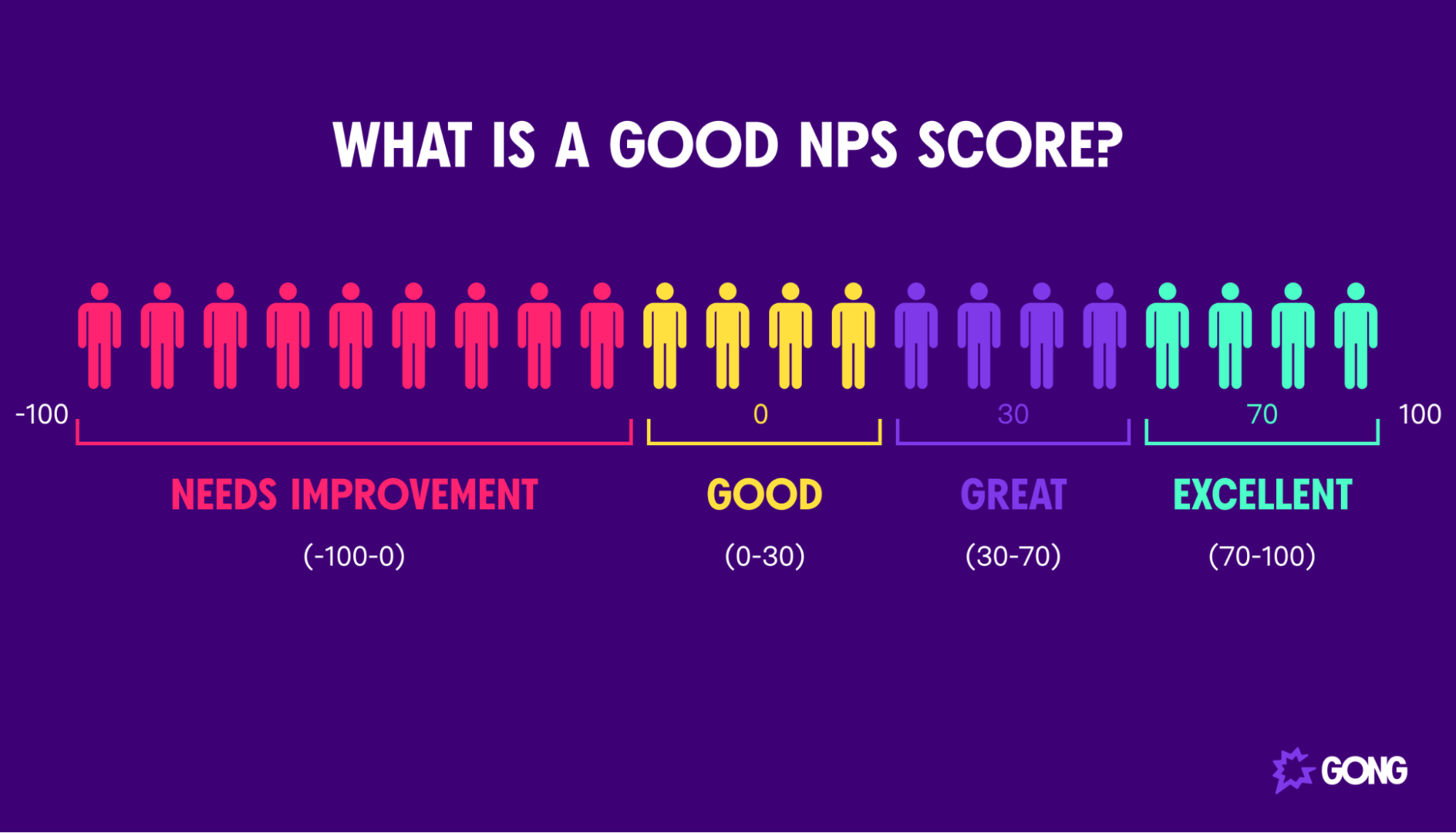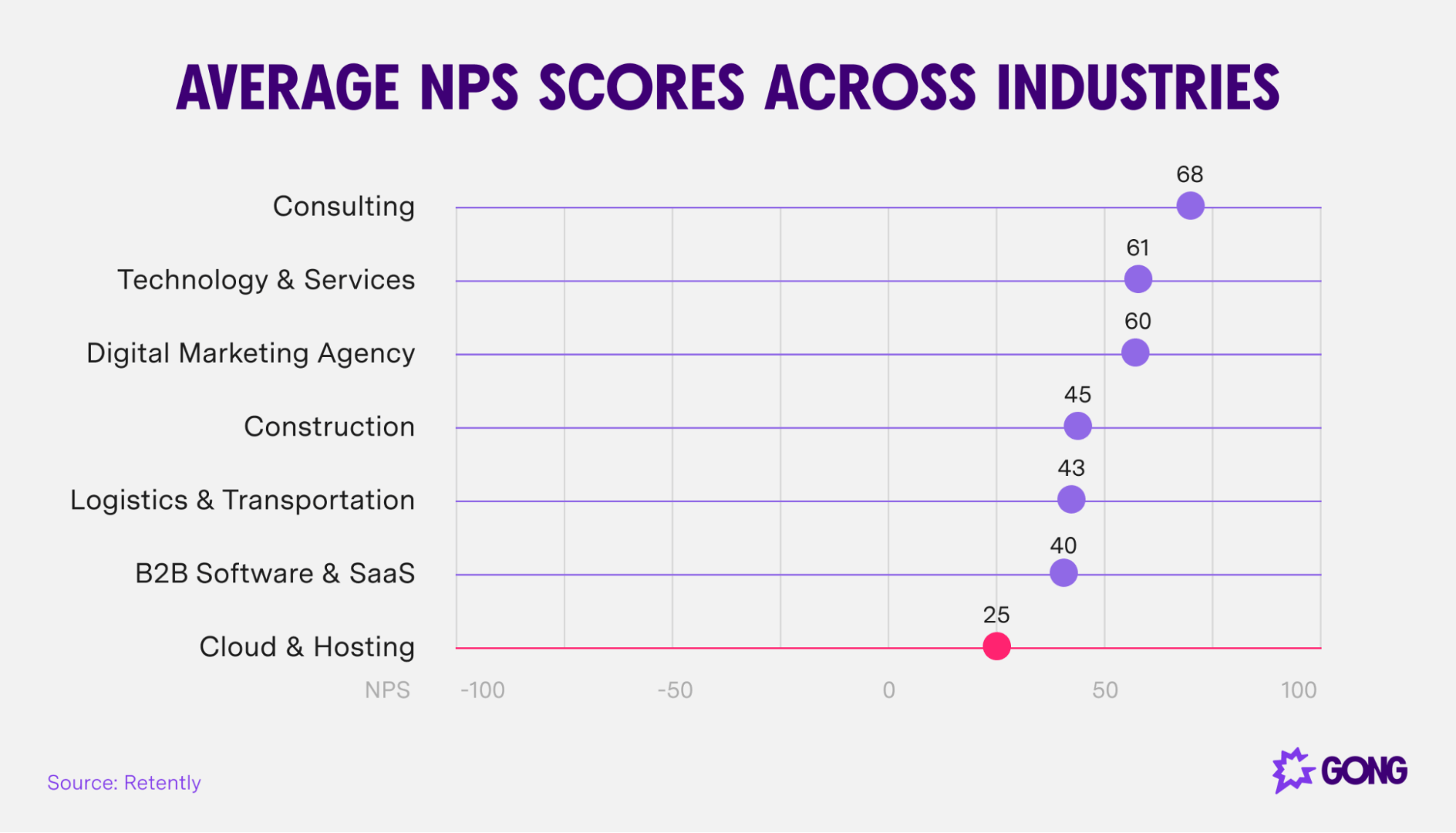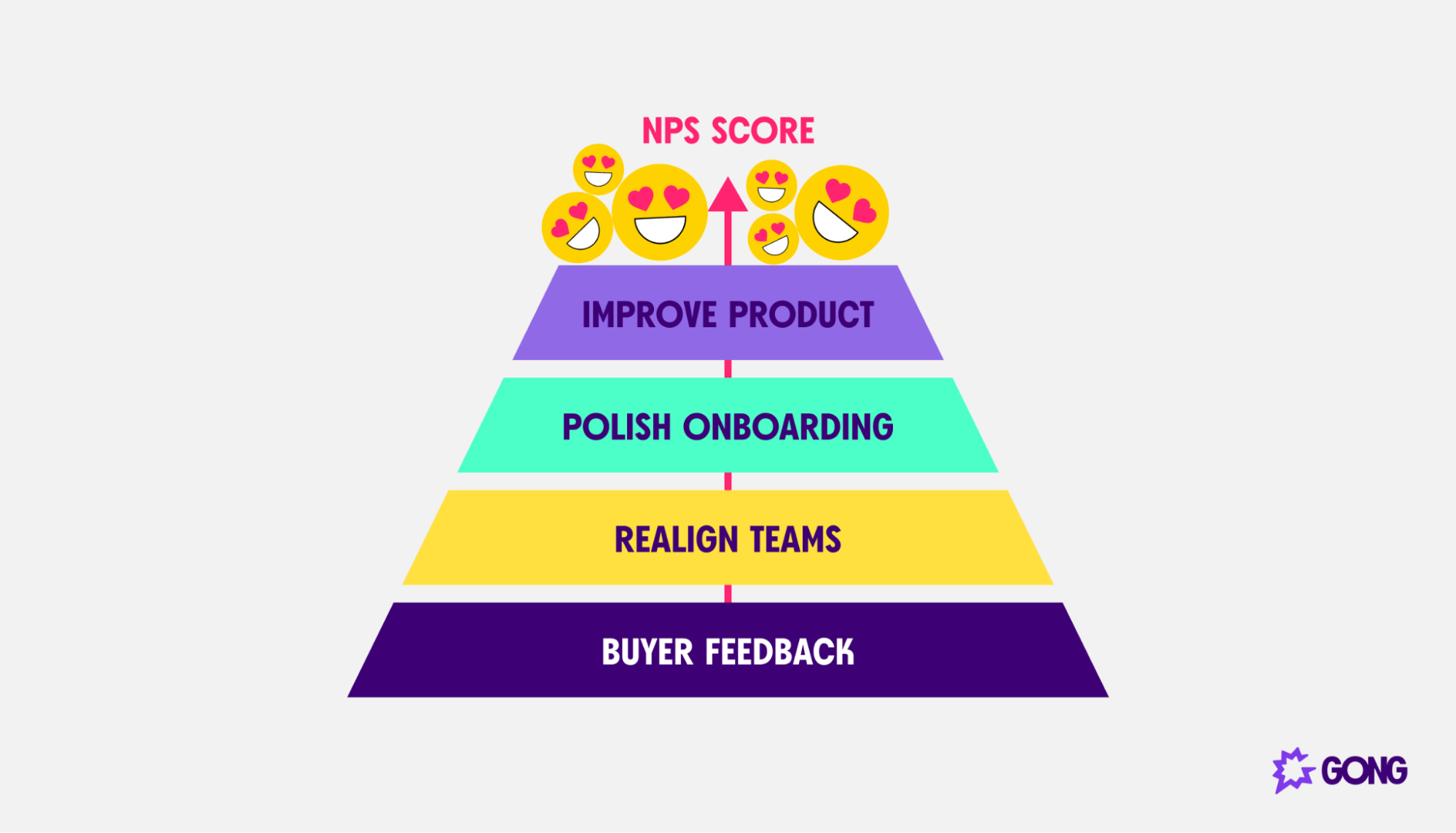How to use net promoter score (NPS) to measure customer satisfaction
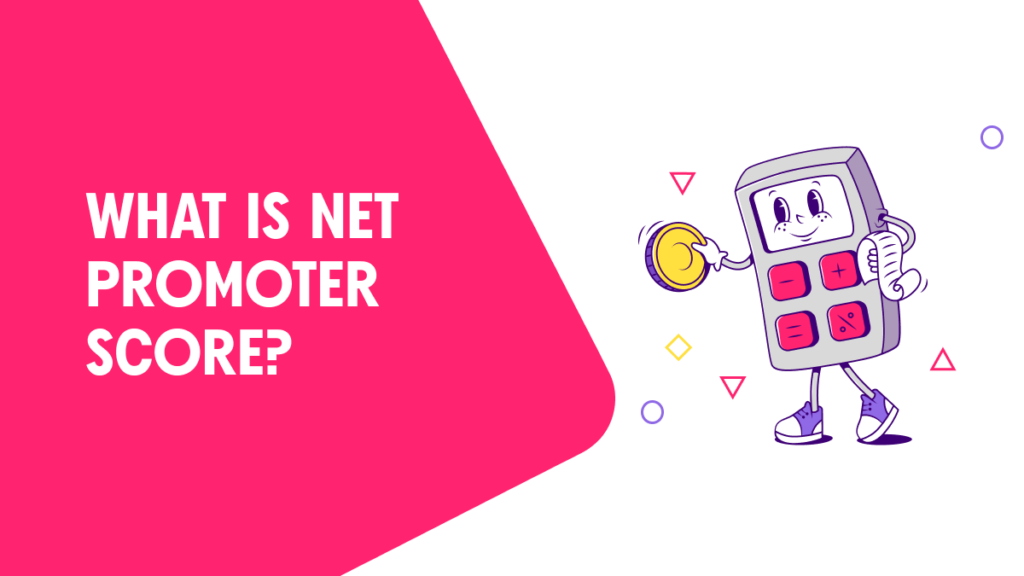
Businesses often struggle to tap into the mind of their buyer. Despite frequent calls and qualitative feedback, it can be difficult to understand which of your buyers are at risk of churning and what’s driving their decision.
As a result, businesses require a standardized metric to understand buyer sentiment and gauge whether their products or services align with customer expectations. That’s where the net promoter score (NPS) comes into play.
In this article, we’ll define net promoter score and outline the steps you need to take to calculate one for your business.
What is the net promoter score?
A net promoter score (NPS) is a standardized rating that measures your buyer experience and overall sentiment. Companies often issue an NPS survey as a part of their overarching net promoter system to assess the customer journey and overall customer loyalty associated with the brand.
Fred Reichheld, a partner at Bain & Company, was the one who came up with the net promoter score in 2003. Reicheld is often considered the program’s creator, involving the signature NPS question and the associated rating scale.
This metric of buyer experience and overall satisfaction is now widely used by companies worldwide.
Many businesses have adopted the metric as a valuable north star to assess whether their buyer experience aligns with buyer expectations.
In fact, more than 69% of buyer experience team members use NPS as a “core metric” to guide their policies and buyer interactions.
The score measures buyer experience through the lens of how many of your buyers would (and would not) recommend your product or service to a friend on a scale of 0 to 10, with 10 meaning the product is highly recommended and 0 meaning the product is not recommended at all.
The NPS score recognizes that it’s not enough to measure buyer satisfaction by those who “like” a product. This magical scale prevents buyers from confusing their positive feelings toward it with merely apathy and tolerance of it.
To assess whether or not your buyers value your product, it’s useful to understand if they would recommend it to their friends or colleagues.
This reframes how they look at the product and whether or not they are comfortable stamping their name and personal brand on the recommendation.
As they evaluate that question, they may wonder how confident they are in the product’s ability to add value to their colleague’s work (making it a worthy recommendation) or negatively impact their personal brand.
To help statistically analyze buyers’ thoughts and feelings toward the product, net promoter score evaluations classify three types of survey respondents: promoters, passives, and detractors.
Promoters
Promoters are evangelists who are fully confident in your product and would recommend your business to a friend.
You want to strive to get as many buyers as possible into the promoter’s range. NPS categorizes promoters as those who select 9 or 10 on the scale.
Passives
Passives are those who like your product but may need to be more passionate to recommend it to a friend.
Businesses should try re-engaging passives to earn their loyalty and nudge them closer to promoter status. NPS categorizes passives as those who select 7 or 8 on the scale.
Detractors
Detractors are those who don’t care enough about your business to recommend it to a friend.
You should evaluate what your business might be doing wrong if you have an overwhelming amount of detractors. NPS categorizes detractors as those who select anything between 0-6 on the scale.
The score can be used to predict future growth since it assesses whether or not your buyers will share positive or negative thoughts about your product or services.
Now that you know the net promoter score, let’s look at why you need to know your net promoter score.
Why do you need to know your net promoter score?
A net promoter score is valuable for businesses for a variety of reasons.
At a high level, the net promoter score enables business owners, marketers, and operators to understand whether or not their products and services are delivering value in the minds of their buyers.
It is one of many tools to set your business up for success. It can sometimes be challenging to understand your buyers and compare them through qualitative feedback against your own or competitors’ businesses.
The net promoter score provides a unique health check that can guide your business strategy and inform where you need to allocate more time and resources. It can help you scale appropriately and prepare for the future.
More specifically, businesses can use their NPS score to make strategic decisions to help improve the experience, reduce churn, benchmark against competitors, and forecast growth.
Let’s break each benefit down one by one in more detail.
1. Assess and improve the experience
Does your buyer like your product or service? How much?
NPS helps establish standardized criteria that quantify how strongly your buyers feel about your product or service.
Business units, including operations, product development, marketing, business intelligence, and customer experience, can use this metric to assess their performance and guide future decisions that impact the company and buyers — both current and future — as a whole.
2. Reduce churn
If customers are having a negative experience, they will churn. Many businesses focus on churn reduction in a variety of ways. Often, it’s a never-ending battle of maintaining peak buyer happiness at all times.
NPS scores enable businesses to take a look at buyer satisfaction and to zero in on buyers who aren’t enthused with the product or service.
Once this segment of buyers is identified, team members can reach out to hear more about the buyers’ existing pain points with the product or service or explain any features they don’t understand.
With your NPS score in hand, you can intercept unhappy buyers and transform them into promoters before they cancel.
Afterall, customer retention is the single most significant revenue driver:
By applying NPS scores to your customer retention strategy, you may increase brand affinity toward the company and ultimately reduce churn.
3. Benchmark against competitors
How does your NPS data compare to your competitors? What about the industry standard?
Because many businesses widely accept the NPS score across industries, you can assess your performance against another competitor or your industry as a whole.
However, it’s important to note that this isn’t the only metric to measure up against your competitors and industry. Other factors like revenue, funding, growth, customer base, and more should be considered.
4. Forecast repeat business
With an NPS score indicating your buyers’ satisfaction, you can begin to extrapolate your orders for the next month, quarter, and even year.
While anything can happen in the market, NPS is one factor enabling forecasters to create predictable growth models.
By understanding how many buyers will likely purchase again, NPS scores once again provide incredible value to organizations.
Now that you know the net promoter score and why it’s important, let’s address how you can calculate yours on your own.
How is net promoter score calculated?
The net promoter score is simple to calculate and requires a few steps.
Typically, it begins with a net promoter score survey sent by the company to its current buyers. Sometimes, you’ll need to incentivize your buyers in various ways to entice them to complete the survey.
In the NPS survey, you must add the question, “How likely are you to recommend this brand/product to a friend or colleague?”
Companies can use various survey programs including Qualtrics, Satmetrix Systems, Medallia, and more.
The answer should have a scale ranging from 1-10, giving the survey respondent the option to select any individual number.
Remember, those who select anything in the 9-10 category are considered promoters. Those who select anything in the 7-8 category are considered passive. Those who select anything from 0-6 are considered detractors.
Next, calculate the overall percentage of promoters and the percentage of detractors:
Finally, you’ll subtract the percentage of your promoters from your detractors to get your final net promoter score.
But why don’t you do anything with passive NPS respondents?
Passive NPS respondents will likely not have a strong impact on future business. They will neither share positive nor negative things about your product, service, or brand in the market.
They may like your product or service, but just not enough to endorse it. However, they won’t say anything negative about your company while detractors could. Using the polar opposites of the scale — promoters and detractors — can help provide balance and a foundational middle ground for an accurate buyer satisfaction rating.
Now that you know how to calculate your NPS score, let’s see how you did.
What is a good net promoter score?
You sent the survey and completed the NPS equation, and now you’re left with a mysterious number. What does it mean?
Once you have your score, you can assess the health of your buyer experience and use it to benchmark against your competitors.
But promoter scores can range from -100 to 100. NPS ratings can be interpreted depending on the preset ranges below:
- -100 – 0: Needs Improvement. Your rating is low, and you should reexamine your buyer experience program and what your buyers need.
- 0-30: Good. Things are going well for your buyers, but there is room for improvement. Reach out and identify ways you can improve the buyer experience.
- 30-70: Great. Your buyers are happy with their experience with your products or service.
- 70-100: Excellent. Congratulations! This is the highest NPS score available. You are providing a premium experience to your buyers.
Don’t fret if you’re in the “Needs Improvement” category. Look at it as an opportunity to re-engage with your buyers and work to earn back their satisfaction and overall endorsement. Plus, sometimes it only takes one positive experience to turn a detractor into a promoter.
An NPS score alone is valuable, but you can also use it to compare your company to your competitors.
However, as you use your NPS score to benchmark against other businesses, you must be careful. Most net promoter score averages will vary by industry, so you need to consider the context of the score.
For example, take a look at the chart below:
As you can see, the average NPS score for a consulting company is 68, while the average NPS score for a cloud and hosting company is 25. There is a wide difference between the two.
However, these industries are important to take into consideration.
For example, if you are a cloud and hosting brand with an NPS score of 29, you might feel discouraged about being in the “Needs Improvement” category. In reality, you would be above average compared to your competition.
That’s why calculating your net promoter score is only half of the task. You need to know how to interpret it in the right context.
4 reasons your net promoter score is crucial
A low NPS isn’t a bad omen for your company.
Instead, it just mean there is more work to be done. Actively working to improve your NPS will require time, resources, and most importantly: listening to your buyers.
Businesses should concentrate on both the detractors and passive respondents — but for different reasons. Passive respondents will be the easiest to convert into promoters. This will have the biggest impact on your NPS score.
However, listening to and nudging the detractors toward a more positive score is valuable. Their feedback is essential for the overall health of your company.
There are many different steps you could take to improve your NPS score.
Each tactic involves multiple business units and builds on one another to create a comprehensive approach to overall customer satisfaction:
Let’s dive into each one a bit deeper to see the prescriptive steps you should take.
1. Gather unfiltered buyer feedback
Reach out to the detractor and see if they would be willing to talk to you on the phone. Why are they frustrated with your product or service? How could it be better?
Sometimes, they simply don’t have enough product education to use it right. Other times, they may have valuable ideas that you can pass on to your product team.
The more calls you have, the better equipped you’ll be to gather trends to guide your business forward.
2. Realign your internal teams
No matter how hard you try to unite your company, sometimes your teams can run astray.
This isn’t always due to faulty leadership; instead, it is often caused by teams being so focused on their own goals that they miss the big picture.
Share buyer feedback from your initial calls with all departments and realign teams around your company’s strategic goals.
3. Enhance the buyer onboarding process
Sometimes buyers experience frustration with a product simply because they don’t know how to properly use it.
This can be solved by improving your buyer onboarding process. How are new customers being onboarded? What educational resources do you offer?
Audit your onboarding process by going through each step with someone who knows nothing about your product. Pay attention to where they click, what questions they ask, and where confusion may lie.
4. Improve your product
Maybe your product or service isn’t giving your buyers what they need. Consider updating or adding new product features customers are requesting.
Review your notes from your buyer feedback calls with your product team.
Which requests are most common? Which are feasible? Which are aligned with your vision for the business? Once you find the overlap, you should add those to your product roadmap.
Maximizing your net promoter score
The net promoter score is a valuable metric to assess the health of your buyer experience. This indicator can show whether or not your buyers are happy and help direct your team to areas where more attention is needed.
By defining “what is net promoter score” and understanding its importance, you can begin to use it to guide strategic business decisions.
Want better visibility of your buyers and customers? Get a demo of Gong and see how winning teams use Gong’s conversation intelligence platform to get winning insights that help to minimize churn and increase retention.
